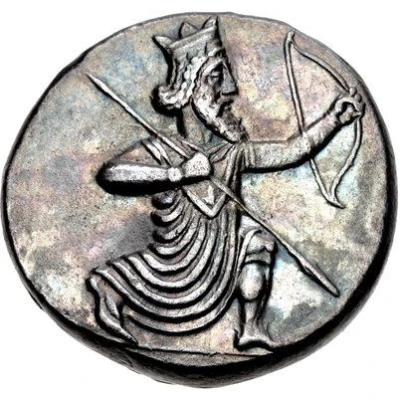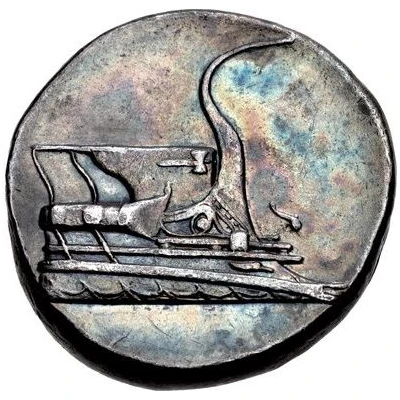


© Classical Numismatic Group, Inc.
Tetradrachm Halicarnassus 400 BC - 380 BC
| Silver | 15.13 g | 24.5 mm |
| Issuer | Achaemenid Empire (Achaemenid Empire (559 BC - 330 BC)) |
|---|---|
| Type | Standard circulation coin |
| Years | 400 BC - 380 BC |
| Value | Tetradrachm (4) |
| Currency | Chian-Rhodian drachm |
| Composition | Silver |
| Weight | 15.13 g |
| Diameter | 24.5 mm |
| Shape | Round (irregular) |
| Technique | Hammered |
| Orientation | Variable alignment ↺ |
| Demonetized | Yes |
| Updated | 2024-10-10 |
| Numista | N#397775 |
|---|---|
| Rarity index | 100% |
Reverse
Prow of galley right, with hornlike akrostolion, fighting platform decorated with labrys, proembolon (upper battering ram) decorated with dolphin and an embolom (principal three pronged battering ram); wave pattern below; to right, small dolphin diagonally downward right.
Comment
Unpublished and unique, for the same types on a contemporary gold daric, cf. Konuk, Coin M53; Konuk, Influences, pl. XXX, 24; de Luynes 2819; Babelon, Perses 124; Traite II 36, pl. LXXXVII, 24; J. P. Six, “Monnaies grecques, inédites et incertaines” in NC 1890, p. 241, 1, pl. 17, 13.
Interesting fact
One interesting fact about the Tetradrachm (Halicarnassus) coin from the Achaemenid Empire is that it features an image of a satyr on the obverse side, which is a mythological creature with a human body and goat-like features. This design was commonly used on coins during the Achaemenid period and symbolized the power and strength of the empire.